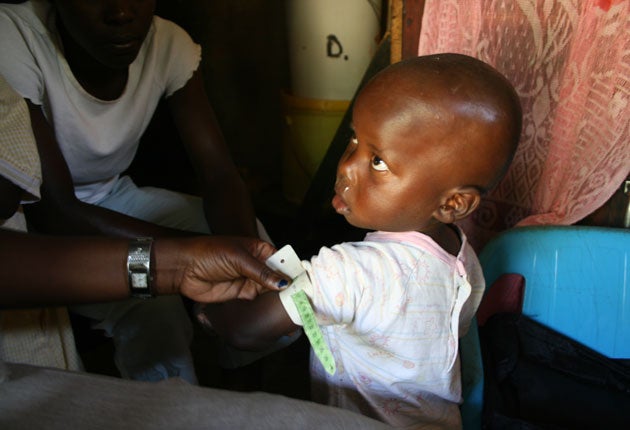In Kenya, proof that the Millennium goals can work
Village's renaissance shows targeted aid can break the cycle of deprivation

Mary Asiko had been quietly dreading retirement. Leaving her desk job in Nairobi and going back to Marenyo, her village in Western Kenya, meant one thing: queues of neighbours asking for money.
Marenyo wasn't exceptional. Its mix of poor soils, bad roads, malnutrition and endemic poverty is hopelessly familiar in much of rural Kenya. "I used to stay for as little time as possible," she remembers. These days she is still helping people, running a widow and orphans group, but Marenyo has changed out of sight. "All we used to farm here was maize and beans and everyone was poor," she says. "Now look."
The approach to her home is flanked by flourishing banana trees, her latest pride and joy is a commercial greenhouse full of tomatoes and a sign advertises timber from her eucalyptus plantation. "I'm happy. You couldn't take me back to Nairobi," she says.
For the last five years the hamlet has been part of the Millennium Villages Project – a global effort to show that large-scale aid can transform even the most impoverished places.
Marenyo is one of a cluster of 11 villages, home to 65,000 people, that has been getting sustained assistance at a cost of $60 per person, per annum. The project aims to leave a community that can pay for its own development when the foreign assistance ends.
The Sauri villages, chosen because the area lagged on almost every indicator, are on course to meet the anti-poverty targets known as the Millennium Development Goals. There are projects all over the developing world, using simple ideas like diversifying and rotating crops, providing clinics and improved schools, community health workers and cheap solutions such as anti-malarial bed nets. In Sauri, providing locals with better seeds and fertilisers and fresh ideas like beekeeping have seen a five-fold increase in the amount of food being grown.
In many instances the problems were well understood but the poverty trap was clamped shut.
Lunchtime at the local Sagam primary school is a case in point. The pupils walk for miles to get to school and trek home again at lunchtime for a meal. A new programme means children can count on lunch without having to go anywhere. Kezia Anangwe, who was a pupil and is now a teacher's assistant, can see the change. "I was hungry from morning to evening," she recalls. "It was a long walk and I would miss lessons. These children are fed well and don't miss lessons."
Three years on, the programme pays for itself, with parents delivering food from increased yields. Enrolment at the school has risen from 700 to 1,000.
The question behind the can-do facade of the Millennium villages is one of scale. The aim was to help 100,000 villages in Africa alone. Fewer than 80 have benefited. To critics they are "successes in a sea of failure". But their champions insist they are "demonstration sites" showing what can be done if modest amounts are spent to help the poorest of the poor help themselves.
Subscribe to Independent Premium to bookmark this article
Want to bookmark your favourite articles and stories to read or reference later? Start your Independent Premium subscription today.

Join our commenting forum
Join thought-provoking conversations, follow other Independent readers and see their replies